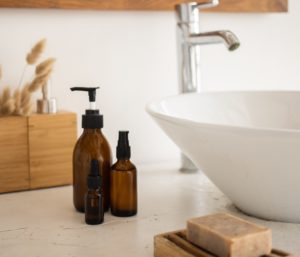Hives, also known as urticaria, can be an uncomfortable and irritating skin condition. Characterized by itchy red welts on the skin, hives are often caused by an allergic reaction, triggering the release of histamine. Fortunately, there are several effective antihistamines available to provide relief from hives. Let’s look at the best antihistamines for hives, their mechanisms of action, and their potential side effects.
-
Understanding Antihistamines:
Before diving into the best antihistamines for hives, it’s important to understand how these medications work. Antihistamines are drugs that block the effects of histamine, a chemical released by the body in response to an allergic reaction. By inhibiting the action of histamine, antihistamines can help alleviate the symptoms of hives, including itching, redness, and swelling.
-
First-Generation Antihistamines:
First-generation antihistamines have been available for several decades and are effective in treating hives. Examples include diphenhydramine (Benadryl) and chlorpheniramine (Chlor-Trimeton). These antihistamines are known to cause drowsiness due to their sedating properties, making them particularly useful when hives disrupt sleep. However, their sedative effects can interfere with daily activities and may not be ideal for daytime use.
-
Second-Generation Antihistamines:
Second-generation antihistamines are newer drugs that have been developed to provide relief from hives without causing significant drowsiness. They are considered the preferred choice for most individuals due to their improved safety profile and reduced side effects. Some popular second-generation antihistamines for hives include cetirizine (Zyrtec), loratadine (Claritin), and fexofenadine (Allegra). These medications provide long-lasting relief and can be taken once daily.
-
Non-Sedating Antihistamines:
As mentioned earlier, sedation is a common side effect of some antihistamines. However, if drowsiness is a concern, non-sedating antihistamines are a better option. Non-sedating antihistamines, such as loratadine, cetirizine, and fexofenadine, have a minimal impact on cognitive function and allow individuals to carry out their daily activities without feeling excessively tired.
-
Combination Antihistamines:
In some cases, hives may be severe and require stronger medication. Combination antihistamines, such as cetirizine with pseudoephedrine (Zyrtec-D) or loratadine with pseudoephedrine (Claritin-D), can be useful. These formulations combine an antihistamine with a decongestant to provide relief from hives as well as nasal congestion. However, it’s important to note that decongestants can cause side effects such as increased heart rate and elevated blood pressure, so they should be used with caution and under medical supervision.
-
Prescription-Strength Antihistamines:
If over-the-counter antihistamines do not provide sufficient relief, a healthcare professional may prescribe stronger medications. Prescription-strength antihistamines, such as levocetirizine (Xyzal) or desloratadine (Clarinex), may be recommended in such cases. These medications are more potent than their over-the-counter counterparts and can effectively alleviate hives that are unresponsive to standard antihistamines. It’s important to follow the prescribed dosage and consult with a healthcare provider to ensure safety and proper usage.
-
Considerations for Children and Older Adults:
When selecting antihistamines for hives in specific populations, it’s important to consider age-related factors. For children, certain antihistamines may be more suitable due to their safety profile. Cetirizine and loratadine are commonly recommended for children as they have been extensively studied and found to be effective with minimal side effects. Older adults, on the other hand, maybe more sensitive to the sedating effects of first-generation antihistamines. Second-generation antihistamines with lower sedative potential, such as fexofenadine and loratadine, are often preferred for this age group.
-
Potential Side Effects:
While antihistamines are generally safe, they can cause side effects in some individuals. Common side effects may include drowsiness, dry mouth, dizziness, and mild gastrointestinal disturbances. Sedating antihistamines, in particular, can impair coordination and concentration. It’s important to read and follow the instructions on the packaging or consult a healthcare professional to understand potential side effects and drug interactions.
-
Consultation with a Healthcare Provider:
Before starting any new medication, it’s always advisable to consult with a healthcare provider. They can evaluate your specific situation, take into account any underlying medical conditions or medications you may be taking, and recommend the most appropriate antihistamine for your hives. They can also provide guidance on proper dosage and usage instructions to ensure optimal effectiveness and minimize the risk of side effects.
-
Lifestyle and Prevention:
While antihistamines provide relief from hives, it’s also important to address the underlying triggers and practice preventive measures. Identifying and avoiding allergens or triggers that cause hives can significantly reduce their occurrence. Additionally, maintaining good skin hygiene, using mild soaps, avoiding hot showers, and wearing loose-fitting clothing can help manage hives and prevent exacerbation.

When it comes to finding the best antihistamines for hives, second-generation antihistamines like cetirizine, loratadine, and fexofenadine are often recommended due to their effectiveness and reduced sedative properties. However, individual responses to antihistamines may vary, and it’s important to consult with a healthcare professional to determine the most suitable option based on your specific needs and medical history.
Remember to follow the recommended dosage and be aware of potential side effects. By combining antihistamine therapy with lifestyle adjustments and preventive measures, you can effectively manage hives and find relief from the uncomfortable symptoms they cause.
